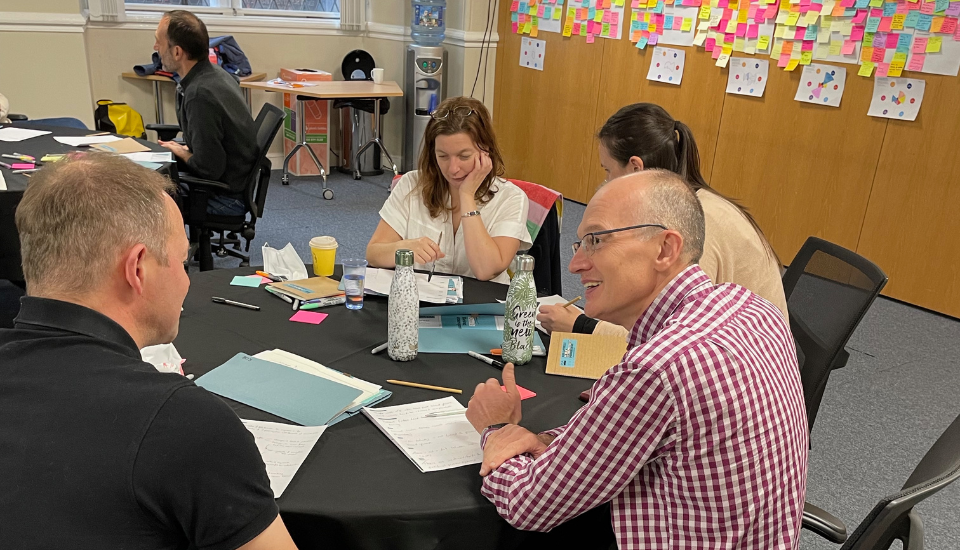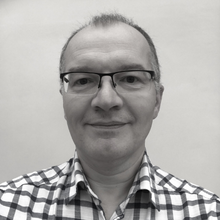A rough guide to being a public entrepreneur in practice
12 entrepreneurial work to support you in your attempts at creativity and innovation.
Our health and social care systems have been working to meet people’s needs for over 70 years. Yet the approach to change is often incremental rather than radical or transformational. Given the pace of change and long-term trends and challenges on the horizon, this approach is no longer sufficient.
How can we liberate the collective potential of creative people more systematically, without waiting for disaster or acute service failure? Can we be pre-emptive by working across systems to support efforts at transformational change without waiting for a burning platform or disaster to incite change? How can we harness a new kind of public entrepreneurship able to respond fast, taking risks and experimenting to meet challenges head on?
Together with NHS Lothian, the RSA designed and ran a public entrepreneur programme to do just that. Through a 6-month journey, we supported 12 members of NHS Lothian’s staff to harness their innovative potential, challenge the status quo and find new ways of addressing challenges they face in their work.
In this case study, Mark Strachan describes his journey throughout the programme as he developed innovative ways for transforming the lives of people with type 1 diabetes.
To learn more about the programme, please read ‘A rough guide to being a public entrepreneur in practice: learning from NHS Lothian’.


Mark is a consultant in diabetes, endocrinology and acute medicine at the Western General Hospital, Edinburgh and honorary professor of the University of Edinburgh.
Mark runs a genetic diabetes service in Lothian. Throughout his career, he has also published widely on the effects of type 2 diabetes and was awarded the RD Lawrence Lectureship by Diabetes UK. Mark leads the south east Scotland thyroid cancer and neuroendocrine cancer services. He is also a treasurer of the British Thyroid Foundation, a trustee and founder of the Ann Edgar Charitable Trust for patients with neuroendocrine cancers and the former Secretary of the Royal College of Physicians of Edinburgh.
The life expectancy of people in Scotland with type 1 diabetes (T1DM) is 12 years lower than the general population.
It is well recognised that achieving near normal glucose levels massively reduces (or abolishes) the likelihood of diabetes complications and is associated with a substantial reduction in premature cardiovascular disease and mortality. Despite the determined efforts of people with diabetes, and the healthcare teams who support them, only 29.6% of people with T1DM in Scotland (32.4% in Lothian) meet the Scottish national glucose control target (HbA1c of 58 mmol/mol) and far fewer meet the more stringent National Institute for Health and Care Excellence (NICE) glucose target (HbA1c of 48 mmol/mol).
Currently in NHS Lothian, there are approximately 5,329 people with Type 1 diabetes. 1,171 (22%) received NHS-funded insulin pump therapy and 199 (3.7%) advanced continuous glucose monitoring (CGM). The annual spend on technology is approximately £1.2m (excluding staff costs). Linking an insulin pump with CGM can create an artificial pancreas system that substantially improves glycaemic control. Such systems have the potential to transform the lives of people with Type 1 diabetes and abolish future complications of diabetes. Such systems are much easier to use than stand-alone insulin pump therapy and so artificial pancreas systems also have the potential to reduce inequalities in access to advanced technologies. Introducing artificial pancreas systems for 90% of adults with T1DM living in Lothian would come at a significant cost, estimated to be in the region of £10-22million pounds per annum, depending on the systems purchased. In the longer term, this cost would be off-set by significant savings in the management of complications as a result of T1DM.
Introducing artificial pancreas systems is not just about the financial challenges - it would significantly change the model of care for T1DM, and it is expected that this would impact the physical infrastructure required to deliver outpatient services, and the workforce to support the model. The potential future model of care fits well with the principles and direction of travel outlined in the emerging Lothian Strategic Development Framework. Artificial pancreas systems could support a more efficient workforce model by reducing the requirement for face-to-face support from clinical staff. It would also fit with our intention to reduce the number of healthcare journeys, in line with our plans to reduce emissions to net zero.
The target of getting 90% of people with T1DM on artificial pancreas systems is clearly ambitious and will require the support of senior executives in NHS Lothian and the Chief Officers of the Integration Joint Boards.
With considerable input from Rebecca Miller and Colin Briggs, who sponsored the public entrepreneur programme led by the RSA, we were able to get a slot at the Senior Management Team meeting in NHS Lothian in late January 2022. This allowed us to put forward the vision for transforming services for Type 1 diabetes and highlight the benefits, opportunities and challenges. Our paper was strongly supported by all the senior executives on SMT, and we were given the go-ahead to arrange a short life working group to consider the issue in more detail and bring back concrete proposals to the SMT.
The terms of reference for the SLWG were drawn up and agreed by SMT and the first meeting of the SLWG was held in early July and chaired by Colin Briggs. Membership includes all key healthcare professional stakeholders, representatives of service management, finance, patient representation. Diabetes Scotland, the main charity for people with diabetes in Scotland, are also actively involved and have representation on the SLWG. Diabetes Scotland see that NHS Lothian is in the vanguard in strategic planning for artificial pancreas systems and are keen that what is agreed going forward is replicated in other Scottish Health Boards. The SLWG will be meeting every 6-8 weeks until December 2022 and its recommendations will be made to SMT in January 2023.
12 entrepreneurial work to support you in your attempts at creativity and innovation.
Blog
Ian Burbidge
Our healthcare system needs transformational change that creates the space for a new paradigm to emerge. Read about how our public entrepreneurship project can support this.
NHS Lothian's Alexandros Pagonidis shares his journey through our public entrepreneur programme as he developed innovative ways of promoting an understanding of neurodiversity in the workplace.